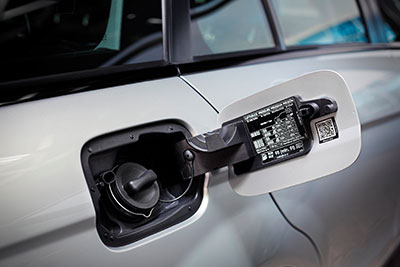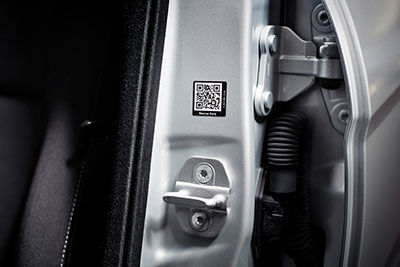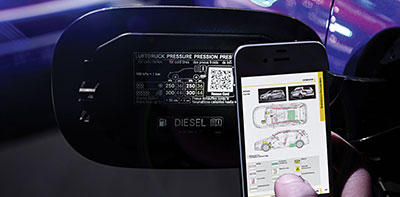
Extrication Tips: July 2014
Randy Schmitz
Features Extrication TrainingMost of you who follow this column can identify a theme, which is how to become more efficient and reduce time at a rescue scene
Most of you who follow this column can identify a theme, which is how to become more efficient and reduce time at a rescue scene
A lot of my columns focus on processes, concepts or options that can make rescuers’ actions more efficient so that we get trapped patients out of vehicles more quickly. For example, if I already know where to disconnect the 12-volt power, I don’t have to use precious time searching the vehicle for the battery to make it safe for me and my crew to work. If I have a heads up about the location of the roof-curtain cylinders, I can strip the trim in the immediate vicinity rather than taking all the trim off prior to cutting the roof, or, perhaps, placing my spreader tips in a place that could contain a high-pressure vessel. What about avoiding the seatbelt pre-tensioner when I want to make a cut on a B-pillar? If I know where these components are located, I can save critical time by not having to search the vehicle in order to work around them.
What if I had all this information at my fingertips on an iPhone or via an iPad or Android tablet?
Studies show that 74 per cent of people use the Internet from their phones, and that smartphone users overwhelmingly choose apps as their way to access the Internet.
 |
|
| Photo 1: Mercedes’ square symbol or QR code with black and white sectors provides information for rescuers.
|
|
 |
|
| Photo 2: Mercedes puts its QR codes on stickers attached to the fuel filler access door. Photos courtesy Mercedes-Benz. |
|
 |
|
| Photo 3: QR codes are also found on the B-pillar on the opposite side of the vehicle.
|
Picking up on that trend, Mercedes-Benz has developed an app to assist rescuers in that critical time of need. This square symbol (see photo 1) with black and white sectors is often used by magazines and other print advertisers, for instance, to direct readers via the Internet to a specific web page. With the appropriate app, every smartphone and tablet equipped with a camera can read QR codes.
Rescuers whose smartphones have a barcode scanner app installed can instantly access Mercedes’ self-proclaimed “not-so-rescuer-friendly” components. Mercedes puts its QR codes on stickers attached to the fuel filler access door (see photo 2) and on the B-pillar on the opposite side of the vehicle (see photo 3). The opposite-side QR-code locations make sense; rarely are both sides of a vehicle damaged in a collision.
This concept is already in use in Australia on an SUV called the GLA. According to my sources at Mercedes, the QR-code stickers will soon be offered free to every Mercedes-Benz vehicle made since the early 1990s.
The information accessed through the QR code includes design details such as a rescue map that shows the location of the airbags, the battery, the tanks, electric cables, high-pressure cylinders and other components. In the case of hybrid models, these maps also carry the location of the additional batteries and high-voltage cables (see photo 4).
QR code background
The letters QR stand for quick response. The codes were so named because the purpose was to create a code that could be “quickly read” by handheld devices. (Although these barcodes have recently increased in popularity, they have actually been around for well over a decade).
Apps to scan QR codes
 |
|
| The information accessed through the QR code includes design details such as a rescue map that shows the location of the airbags, the battery, the tanks, electric cables, high-pressure cylinders and other components.
|
Most smartphones come pre-loaded with a QR-code scanner; if your phone does not have a scanner, just search for QR code reader apps and pick one to download. This link provides a list of QR-code readers just for the iPhone: http://news.cnet.com/qr-code-readers-for-iphone and has, in my opinion, the best for QR code reader apps for the iPhone including NeoReader, Optiscan, QR App and QuickMark.
You can find Android barcode scanners at http://www.androidtapp.com/barcode-scanner/. This link includes a review of the barcode scanner Android app and a video that shows you exactly how to use the app. So once you have downloaded the app of your choice, all you really need to do is open it and go to the scanning screen. Hold the phone in front of a QR code. You will see a red bar scanning the code. Most apps also highlight the four main squares of the QR code, and then automatically open the URL. Scanning is very easy, so start scanning these QR-code stickers on the B-pillar or fuel filler door to find out the information they contain. As long as the 3G or 4G network connection to your smartphone is reasonable and efficient, there should not be any delays receiving the information promptly (see photo 5).
Also, an upgraded QR-code, called Model 2, was created so that the code can be read smoothly even if it is distorted in some way. QR codes that are printed on a curved surface or are distorted because of the reading angle can still be scanned efficiently by referring to an alignment pattern embedded in them; even if you are scanning a code on crushed metal, you can still receive the information.
All new Mercedes-Benz cars will come with QR codes, and, in the coming months, the company will offer the stickers free of charge to owners of all Mercedes-Benz cars. Once there is irrefutable data on how effective this system performs, other vehicle manufactures will likely follow suit and implement QR codes, particularly since Mercedes-Benz has relinquished the right to patent registering in an effort to the system available to everyone.
It’s not a bad idea to go down to your nearest Mercedes dealership and test the QR-code concept on your phone to ensure it is compatible with your device. Rescuers can look forward to using this technology to advance road safety and better patient outcomes. Adopting QR codes is another great example of German engineering and innovation. Way to go Mercedes-Benz!
Randy Schmitz is a Calgary firefighter who has been extensively involved in the extrication field for 21 years. He is an extrication instructor and has competed internationally. He is the education chair for Transport Emergency Rescue Committee (T.E.R.C.) in Canada, a T.E.R.C. & WRO International extrication judge and a tester and evaluator for manufactured prototype products for extrication equipment. He can be reached at rwschmitz@shaw.ca. Follow him on Twitter at @firedog7.
Print this page